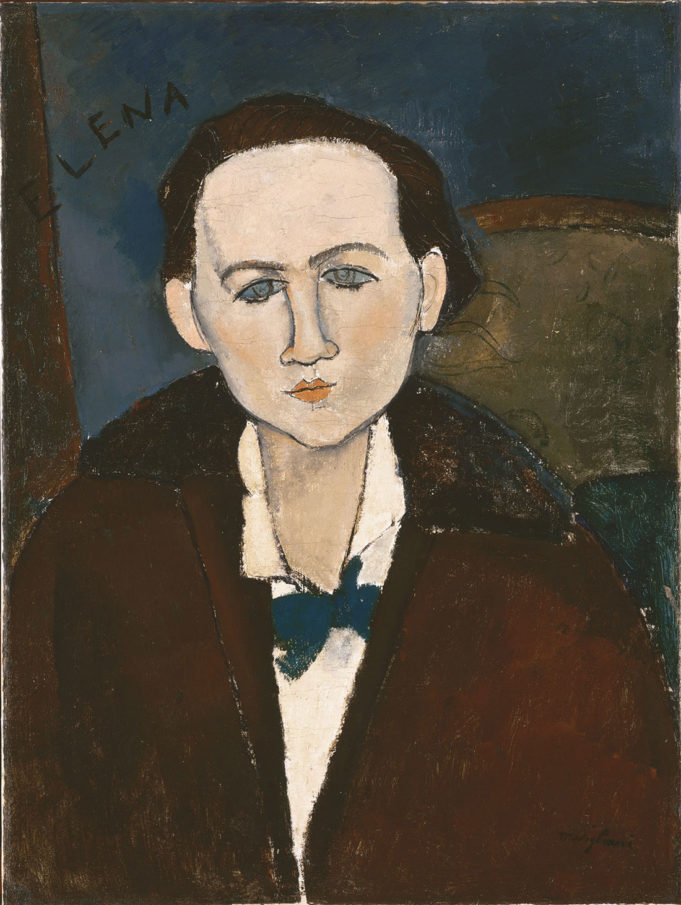A hundred years ago, what we now call “modern art” had yet to make a favorable impression on our country’s critics and tastemakers. In a young nation with new-money insecurities, patrons of means in the United States favored the safer varieties of Neoclassicism and Romanticism to the hazards of this European export.
The years following World War I provided an opening for a greater exchange of ideas across the Atlantic, as Americans emerged from relative cultural isolation to participate more fully in the international conversation. It was during this period, in 1921, when young art critic and collector Duncan Phillips founded the first gallery of modern art in the United States. The Phillips Collection of Washington, D.C., was conceived as a “museum of modern art and its sources,” and it has since grown to include more than 3,000 works by European and American artists in its permanent collection.
Fort Worth’s Kimbell Art Museum is fortunate to host some of the museum’s most significant and iconic pieces in A Modern Vision: European Masterworks From the Phillips Collection, on view at the Piano Pavilion through Aug. 13.
Like any great collection, A Modern Vision manages to transcend even the virtues of its constituent parts to become a work of art in its own right. Individual masterpieces by artists from Courbet to Kandinsky are arranged in dialogue with one another. Phillips grouped artworks together, not by chronology or geography, but by thematic continuums that span generations of artists in conversation with a common body of work.
A still life by Jean-Simeon Chardin, “A Bowl of Plums,” painted in 1728 (by far the oldest piece in this exhibition), is paired with a 1953 still life by Giorgio Morandi, illustrating what Phillips called “the congenial spirits among the artists.” Phillips sought out pre-modern artworks that anticipated later developments in form, color, and texture, and they are displayed in such a way as to let us see the works through the eye of their collector.
Elsewhere in the exhibit, Daumier’s “The Uprising,” a street scene depicting a revolutionary moment from 1848, is flanked by two landscapes by Gustave Courbet. Paul Cezanne’s 1878 self-portrait hangs next to a 1917 portrait by Modigliani. Two impasto landscapes by Nicolas de Staël face Paul Klee’s etched hieroglyphics. Multiple works by Pierre Bonnard and Pablo Picasso wash the galleries in a profusion of color.
Of particular note is Oskar Kokoschka’s stunning “Portrait of Lotte Franzos,” an electric and deeply moving composition from 1909, paired here with a bronze face sculpture by Picasso. There are many works by Georges Braque from his Cubist period but also some of his lesser-known canvases from the 1950s.
If A Modern Vision facilitates a charged dialogue within itself, the exhibit as a whole engages powerfully with the Kimbell’s permanent collection. When you leave the Phillips Collection, make your way back across the lawn to the Kahn Building. Visit the courtyard’s “L’Air” (1938) by sculptor Aristide Maillol, having just seen his “Head of a Woman” (1898). Consider the Kimbell’s pair of Van Gogh paintings from 1888 and 1889 — you will have just seen another pair from the same years. Perhaps best of all, the Kimbell’s newest acquisition, Modigliani’s stone sculpture “Head” (c. 1913), is illuminated by an encounter with his 1917 portrait “Elena Povolozky.” To be able to view these two collections in such close proximity is a once-in-a-lifetime treat.
Along these lines, and a rarer opportunity still, is the chance (until June 25) to visit the pastel collection of architect Louis Kahn, having just seen the Phillips Collection’s “Dancers at the Barre” (c. 1900) by Edgar Degas.
Duncan Phillips wrote that “pictures send us back to life and to other arts with the ability to see beauty all about us as we go on our accustomed ways. Such a quickening of perceptions is surely worth cultivating.” A Modern Vision embodies this cultivation with clarity and purpose, demonstrating that a truly great collection of art is not primarily about quantity or quality — it is about selection, choosing the right piece to communicate the right idea.
When you visit A Modern Vision: European Masterworks From the Phillips Collection, plan to spend about 45 minutes with the self-guided audio tour, plus time for the (free) permanent collection. Avoid the exhibit’s $18 adult ticket price by going on half-price Tuesdays or Friday evenings (5-8pm), or better yet by becoming a member.
A Modern Vision: European Masterworks from the Phillips Collection,Thru Aug 13 at the Kimbell Art Museum, 3333 Camp Bowie Blvd, FW. $14-18. 817-332-8451.












